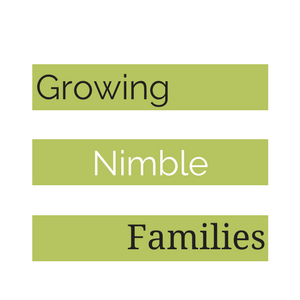Sensory Play – Part 6- Touch
Here is the last in the current Sensory play series of articles written by the multi-talented Elaine, an Occupational therapist from littlesheeplearning.co.uk
 . Elaine also writes a blog
. Elaine also writes a blog 
 that has news from Littlesheep Learning and the wider world of education and learning. She’s also featured in the free play-activities.com
that has news from Littlesheep Learning and the wider world of education and learning. She’s also featured in the free play-activities.com
 daily play activity emails.
daily play activity emails.
[tag]Sensory play[/tag] an introduction
Future: Sensory [tag]competition [/tag]Closed
Finally, we have the last part of this series of articles on sensory play; looking at play focussed on the sense of [tag]touch[/tag].
Touch is probably only second to sight when it comes to common stimulation and using the sense of touch in [tag]play[/tag] is probably the most thought of part of sensory play. As outlined in the introduction, [tag]sensory play[/tag] has become synonymous with messy play, however there is a lot more to [tag]touchy[/tag] feely play than getting messy (although that happens sometimes too!); touch play is about exploring [tag]textures[/tag].
[tag]Babies[/tag] enjoy touch very early on, they like to snuggle with [tag]soft blankets[/tag] and investigate furry soft toys. As they grow older, they enjoy feeling different textures and the labels / tags on blankets become possible then, as a toddler, they can really start to experience the popular traditional messy play.
[tag]Soft play[/tag] areas provide a location for full body touch sensory play. Children can experience burying themselves in [tag]ball pools[/tag], squeezing through tunnels, tumbling onto soft mats and being squeezed between rollers. These types of sensory play [tag]activities[/tag] all help them develop [tag]motor[/tag] and [tag]proprioceptive[/tag] skills.
Go on a touchy feely walk, can you find the roughness of the house brick, a smooth pebble, a prickly holly leaf, some bumpy tree bark and a wet puddle. One way to help children visualise textures is to produce rubbings by colouring with the side of a wax crayon carefully.

Some [tag]sensory materials[/tag] for dry texture play are cereals, dry rice and pasta, dried beans and peas, sugar, salt, dry sand, potato flakes, oats, cotton wool balls, beads and gravel. Place the materials in a sand tray and play with them using toys usually used with sand – scoops, spades, pots and sieves. Mix together materials to increase [tag]tactile[/tag] input and use sieves to separate peas from flour and slotted spoons to separate beans from rice.
Messier [tag]sensory substances[/tag] for touchy feely play include water, shaving foam, jelly, cornflour gloop, wet sand, compost, mud, wet pasta, papier-mâché, baby lotion and mashed potato. Again, these items can be put in a sand tray and played with using spoons, buckets and colanders. Hide objects (for example plastic dinosaurs, marbles or coins) in the substance and see if the children can find them.
Finger and hand painting activities also give an opportunity for sensory play whilst developing [tag]creativity[/tag]. Set up the paints and allow your child to get as messy as they want!
Play feely games to explore different textures. Place familiar items in a bag; for example, a teddy bear, a ball, a banana, a car and a spoon. Reach in and feel them and guess what they are? Alternatively, feel and describe what it feels like – is it hard, soft, bumpy, smooth, furry, cold or rough? Collect pairs of samples of fabric, for example dishcloth, scourer pad, fleece, fur fabric, silk, and cotton and put one of each into two bags, using the sense of touch feel and find the matching pair in each bag?
Hopefully, this article has helped identify alternative touch sensory play ideas to the typical messy play. Not all children enjoy messy play activities but with the different types of touchy feely play outlined, all children can enjoy some type of touch sensory play.
 Elaine trained as an Occupational Therapist before working with children with autism on home based early intervention programmes. Through her work in the home she helped parents to support their child’s learning, implemented behaviour plans and assisted with teaching self help skills for example toilet training, self-feeding and dressing. She has also had experience of supporting children with special educational needs in mainstream schools, adapting the curriculum to make it accessible to them. After the birth of her first child, Elaine started Littlesheep Learning – www.littlesheep-learning.co.uk – an online store with an ever-growing range of teaching and learning materials for everyone who wants to help their children reach their potential.
Elaine trained as an Occupational Therapist before working with children with autism on home based early intervention programmes. Through her work in the home she helped parents to support their child’s learning, implemented behaviour plans and assisted with teaching self help skills for example toilet training, self-feeding and dressing. She has also had experience of supporting children with special educational needs in mainstream schools, adapting the curriculum to make it accessible to them. After the birth of her first child, Elaine started Littlesheep Learning – www.littlesheep-learning.co.uk – an online store with an ever-growing range of teaching and learning materials for everyone who wants to help their children reach their potential.











Hi, I came across your blog through MommyFest. I’m really glad I did. I have a child with selective mutism and SPD (well unofficially, we go on Thursday to get the official review done). I do some sensory activities at home, but am always looking for more ideas. Thanks so much.